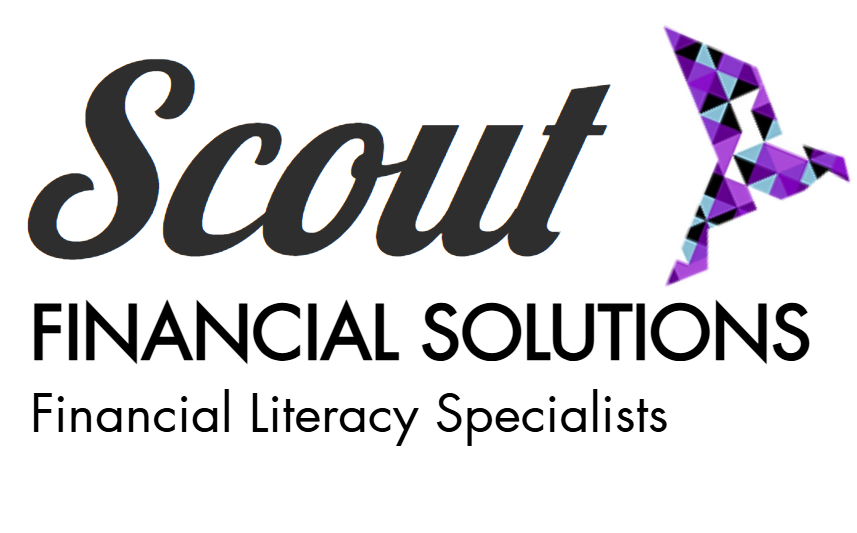November is Financial Literacy Month in Canada, and we have Cate Morris from Scout Financial Solutions sharing why it’s important to know your dough.
This week we will be sharing tips on understanding what credit is.
“Credit is when we borrow money from others, who the financial industry will call lenders, to buy something that we don’t have enough money to fully pay for ourselves,” said Cate Morris. “So essentially we are borrowing money from others to finance something for ourselves. Now this borrowing involves a legal agreement that very clearly outlines the borrowing and repayment terms, including the interest charged to use their money.”
Taking out a mortgage to purchase a home or financing a car are two excellent instances of utilizing credit. Other, more well-known credit examples include using credit cards.
“Lenders will look at an applicant’s creditworthiness, which is how they assess the risk of lending to that applicant. They use something called the five C’s of credit to help with these lending decisions,” explained Morris.
The Five C’s of Credit
The five C’s of credit are capacity, capital, collateral, conditions, and character.
Morris explained further what the five C’s mean to applicants seeking credit. Capacity indicates if the applicant makes enough money to pay off the debt. Capital refers to the applicant’s existing valuable possessions. Collateral includes items that the lender may seize if the borrower defaults on the loan. Additionally, they will examine the conditions, such as the state of the economy or other factors that may be related to the borrowing request. Last but not least, only things that are occurring on a bigger scale than the particular application. They will consider the applicant’s character, which means lenders will see what financial practices the applicants exhibit. Do they have a steady source of income? Have they lived in the same location for an extended period of time? How have they used credit in the past or present? Just to name a few ideas.
Credit history, which is a compilation of publicly available data on a borrower’s credit usage, is what lenders will examine.
“So all the information from lenders is reported to credit reporting agencies on a regular basis, and there are two places that new lenders can check credit histories: Equifax Canada and TransUnion,” said Morris. “There are also two processes to check credit usage and credit history: the first is called a credit report, and the other process, sometimes used by lenders, is called a credit score.”
Your credit usage history and current situation are recorded in both your credit report and credit score.
“Credit scores are simple, at-a-glance credit usage reporting tools that help some lenders decide if they’re willing to lend or extend credit to a borrower,” said Morris. “This score is a three-digit number that ranges from 300 to 900, and ideally, the higher the credit score, the higher the chance of approval.”
Morris shares that a relatively complex algorithm that takes into account a number of variables, including timely payments, is used to generate these credit scores. Your credit limit, how you use it, how many credit accounts you presently have open, how long you’ve had the account, and even the kinds of credit accounts you have will be taken into account. One thing people should remember is that a credit report is a more useful tool for tracking credit usage since it gives lenders clearer information and allows borrowers to offer input on the process.
“To increase your credit score quickly, first and foremost, pay at least the minimum amounts on time, and another thing you can do is limit your credit overspending; they call that the credit utilization,” explained Morris. “Don’t frequently open and close credit accounts; a lot of times people will flip their credit balance, and that actually means they’re closing an old account that you have established history with in order to open up a new account.”
Morris says to exercise caution. In addition, individuals should manage their finances with a budget that includes a strategy for paying off any debts they may have taken on. Everyone should attempt to be more intentional with their money.
MBC asked Morris about lenders other than traditional lenders like banks, the money-lending places that are found on many street corners, and what her thoughts are about them.
“Don’t do it! It’s a very slippery slope, but it’s almost impossible to climb out of those types of lending places. They are called predatory lenders, and their primary objective is to make money off of people who are struggling,” said Morris. “Look at other ways to borrow and work on building up good credit ratings so that you can have access to healthier credit.”
To learn more about Scout Financial Solutions, visit their Facebook page: MoneyScout4U, website: www.moneyscout.ca, or email: moneyscout@sasktel.net, or call 306-530-1268 and chat with Cate Morris.
